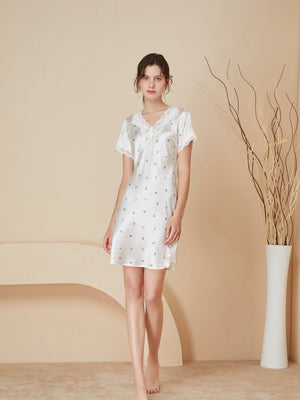Silk Print Fabric: The Ultimate Guide to Luxurious Textiles and Innovative Designs
- ved wangfred
-

Imagine a fabric that whispers luxury, dances with color, and carries centuries of artistry in every thread. Silk print fabric is more than just a textile—it’s a canvas where heritage meets contemporary design. From runway fashion to home décor, this material has captivated creators and consumers alike, offering unmatched sophistication and adaptability. Let’s unravel the story behind this exquisite fabric and discover why it remains a symbol of refined taste.
The History of Silk and Its Journey to Modern Printing
Silk’s origins trace back to ancient China, where it was reserved for royalty and the elite. The secret of sericulture—cultivating silkworms for their cocoons—was guarded for millennia. Over time, silk spread via the Silk Road, becoming a global symbol of wealth. The advent of printing techniques transformed plain silk into a medium for artistic expression. Early artisans used hand-carved blocks to stamp intricate patterns, laying the foundation for today’s advanced digital printing methods.
How Silk Print Fabric Is Made
Creating silk print fabric involves multiple stages:
- Harvesting Raw Silk: Silkworms spin cocoons, which are boiled to extract long, continuous fibers.
- Weaving: Fibers are spun into yarn and woven into smooth, lustrous fabric.
- Pre-Treatment: The fabric is washed and treated to ensure optimal dye absorption.
- Printing: Designs are applied using screen printing, digital printing, or heat transfer techniques.
- Finishing: Processes like steaming fix colors, while softening treatments enhance texture.
Why Designers and Consumers Love Silk Print Fabric
Silk print fabric offers unique advantages:
- Vibrant Color Retention: Silk’s smooth surface allows dyes to bond deeply, creating rich, fade-resistant hues.
- Breathability: Natural protein fibers regulate temperature, keeping wearers cool in summer and warm in winter.
- Hypoallergenic Qualities: Resistant to dust mites and mold, silk is ideal for sensitive skin.
- Versatility: Suitable for haute couture gowns, scarves, upholstery, and wall art.
Applications Across Industries
Silk print fabric transcends traditional boundaries:
- Fashion: Evening wear, bridal gowns, and accessories leverage silk’s drape and sheen.
- Home Décor: Printed silk curtains, cushions, and bedding add opulence to interiors.
- Art Installations: Artists use digitally printed silk for large-scale, translucent displays.
Caring for Silk Print Fabric
Preserve its beauty with these tips:
- Hand-wash in cold water with mild detergent or opt for professional dry cleaning.
- Avoid direct sunlight to prevent color fading.
- Store in breathable cotton bags to prevent moisture buildup.
Sustainability in Silk Production
Modern silk cultivation increasingly prioritizes eco-friendly practices:
- Ethical sericulture methods that minimize harm to silkworms.
- Plant-based dyes and waterless digital printing reducing chemical waste.
- Closed-loop systems recycling water and materials during processing.
The Future of Silk Print Innovation
Emerging technologies are reshaping possibilities:
- 3D printing of silk proteins for customizable textures.
- Smart textiles integrating conductive inks for wearable tech applications.
- Biodegradable prints that decompose without environmental harm.
From ancient looms to AI-driven design tools, silk print fabric continues to reinvent itself. Whether adorning a couture masterpiece or accenting a minimalist living space, it remains a testament to human creativity and nature’s brilliance. As sustainable practices merge with cutting-edge technology, this timeless textile is poised to dazzle future generations—one exquisite print at a time.












